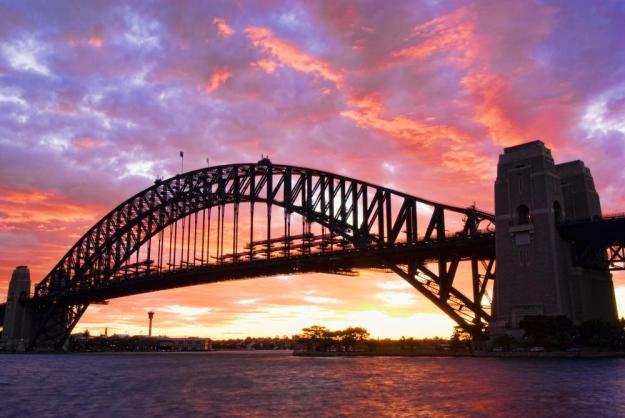 When the maintenance team responsible for Sydney’s Harbour Bridge was given the green light to repaint the iconic bridge for the first time in its 81-year history, one of its top priorities was to find a way to safely strip and blast the old paint from the structure, aware that exposing workers to substances such as lead and asbestos would be harmful to their health.
When the maintenance team responsible for Sydney’s Harbour Bridge was given the green light to repaint the iconic bridge for the first time in its 81-year history, one of its top priorities was to find a way to safely strip and blast the old paint from the structure, aware that exposing workers to substances such as lead and asbestos would be harmful to their health.
After working with a team of researchers at Sydney’s University of Technology (UTS), the solution was provided in the form of two grit-blasting robots that are already working their way across the southern spans of the bridge in a project billed as one of the biggest maintenance programs of its kind.
The autonomous robots, equipped with high-pressure cleaners, first need to be set up in a confined area around a small section of the bridge. Once secured, it’s simply a case of hitting a button and leaving them to do their work.
Bit by bit, they scan the structure to create a 3D map that helps them determine how much force needs to be applied to remove the paint.

Martin Lloyd of UTS described the autonomous, grit-blasting robots as “a world-first technology”, adding that they packed enough power to slice through clothes and skin.
He explained that removing the paint from the enormous steel structure was one of the most dangerous tasks involved in maintaining the bridge.
“It’s certainly not for the faint hearted,” Lloyd said. “You’re working in often very cluttered and confined spaces. And as soon as you start blasting there’s a lot of dust and debris.”
Fifty painters are currently following the robots around the bridge – nicknamed the coathanger for its distinctive shape – with the entire project expected to take about two years.
“The new paint, still in that famous shade that we call ‘Harbour Bridge Grey’ is expected to last thirty years and won’t darken or change over time,” Roads Minister Duncan Gay said.
“It takes a lot of work to keep this national icon in good order all year round and the repaint of the southern spans will come out of the Bridge’s AUS$18 million ($16.5 m) annual maintenance budget.”
As for Lloyd and his team, they’re already making moves to commercialize the technology powering the robots, having recently signed a deal that could see it go global. With more than 400,000 steel bridges in the US and Europe alone, and with abrasive blasting also used in a number of other industries, it’s an opportunity Lloyd and his team don’t want to see slip by.
[Source: BBC, SBS] [Top image: Mroz / Shutterstock]


